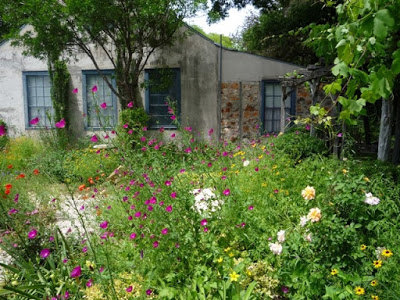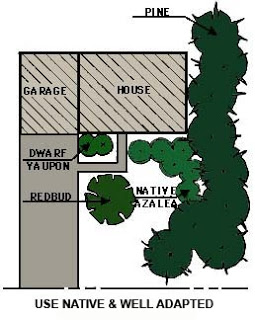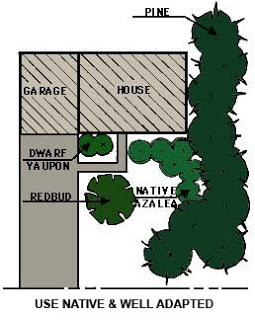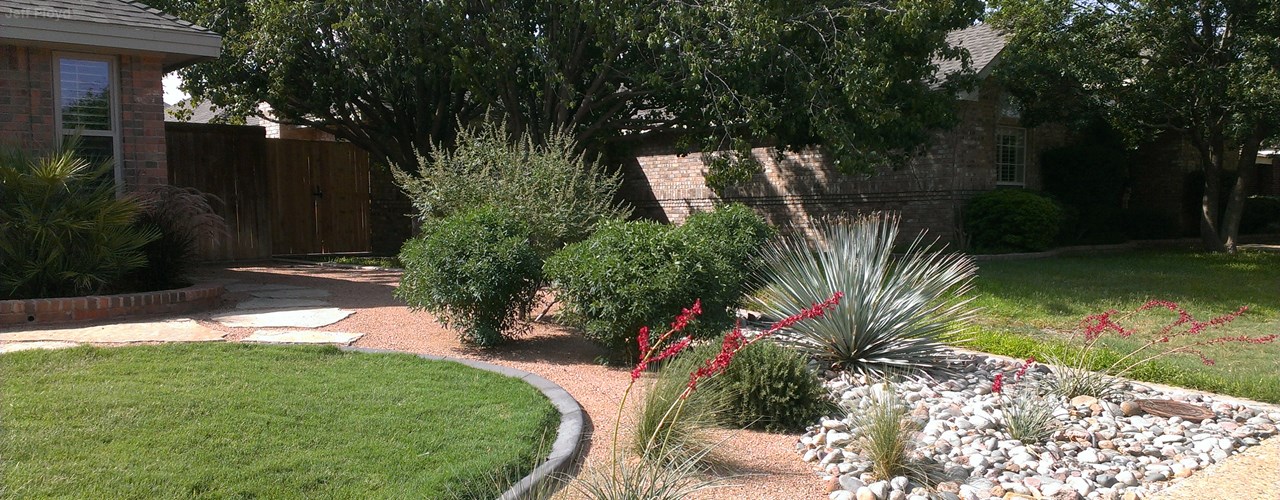Native Plants for Backyard Wildlife
A well-manicured lawn with perfectly trimmed trees and shrubs may look appealing to people, but it can be a veritable desert for many species of wildlife. The majority of ornamental plant species do not provide enough food or cover, making gardens unappealing to animals. One of the most important components of great backyard wildlife habitat is the type and variety of plants you have available. Wildlife require an assortment of native plants in order to thrive and with proper planning a backyard can serve as an oasis in a landscape that has been altered with development.
Choose plant species native to the ecoregion: All plants require specific growing conditions, including the type of soil, the general climate, amount of rainfall and amount of sunlight. Choosing plants native to your ecoregion will ensure the plant will thrive instead of just survive in the backyard. Native plants are hardier than non-native species and require less maintenance once established, because they are adapted to local conditions. Online resources about native plants are available through the Aggie Horticulture Earth-Kind® Plant Selector, the Texas A&M Agrilife Extension Bookstore and Lady Bird Johnson Wildflower Center. Professional advice is also available through your local Texas A&M Agrilife County Extension Office.

An example of a backyard wildlife habitat maintained by the Comal Master Gardeners in New Braunfels, Texas. More information on how to become a Texas Master Gardner is available here.
Grow a diversity of plant species: Wildlife require many different types of vegetation in their habitat, including grasses, ground cover, wildflowers, brush and trees. Depending on the season wildlife will have different energy requirements, so when planning a backyard habitat be sure to choose plant species that bloom and fruit at various times of the year. Seeds, berries, nuts, nectar, and browse are all potential food sources for different species. A flower garden will provide food for a variety of insect pollinators and hummingbirds, while grasses, shrubs and trees can provide seeds and berries for mammals and birds. Insects, spiders and worms will be attracted to the yard and provide a valuable food source for a variety of birds, reptiles and amphibians. Evergreen species such as yaupon provide excellent shelter all year round.
Create a planting plan: After choosing the specific native plants for the habitat, the next step is to decide their placement in the backyard. Ensure that the species you plant have enough room once they reach maturity; larger species of shade trees can require up to 180 square feet of space when full grown. Trimming a tree or shrub in order to make it fit a certain area can result in an unhealthy plant. In addition, spreading branches provide shelter to wildlife. The timing of planting is also very important to ensure that plants thrive. If possible, plant in the cool season (late fall or early spring) to ensure plants are well established before the harsher summer months. The Texas A&M Forest Service has an excellent online tool available to help with planning your tree planting.


An example of a simple backyard habitat planting plan. More information on landscape design plans are available from the Aggie Horticulture Earth Kind Project and the City of Austin’s Grow Green Program.
Look through the eyes of wildlife: Another important aspect of planning is to create a multi-level effect. This means providing ground cover, medium height grasses or shrubs and medium to large trees; allowing many different-sized wildlife to have habitat available to them. A quick and easy way to ensure vegetation is available for all shapes and sizes of wildlife is to physically get down on their level to check for any holes in the various habitat layers.
The variety and amount of wildlife attracted to your backyard will depend on your yard’s proximity to other habitat and how well those habitats are connected, but even houses located in the middle of downtown can expect to attract wildlife. With some careful planning and a little patience it can be easy to create beautiful wildlife habitat right in your own backyard.
Texas A&M AgriLife Extension Bookstore Online and Print Resources
Using Plants to Attract Wildlife:
http://www.agrilifebookstore.org/Using-Plants-to-Attract-Wildlife-p/erpt-009.htm
Texas Wildscapes - Gardening for Wildlife:
http://www.agrilifebookstore.org/Texas-Wildscapes-Gardening-for-Wildlife-p/wf-045.htm
Trees of Texas - An Easy Guide to Leaf Identification:
http://www.agrilifebookstore.org/Trees-of-Texas-p/rm-026.htm
Earth-Kind Landscape Management:
http://www.agrilifebookstore.org/Earth-Kind-Landscape-Management-p/ht-013.htm
Enhancing Your Yard for Wildlife:
http://www.agrilifebookstore.org/Enhancing-Your-Yard-for-Wildlife-p/erpt-006.htm
Neighborhood Friendly Landscapes:
http://www.agrilifebookstore.org/Neighborhood-Friendly-Landscapes-p/erpt-007.htm
Literature Cited
- Earth Kind®. 2010. Native Habitat. Web. http://aggie-horticulture.tamu.edu/earthkind/files/2010/10/wildscapes.pdf
- Earth Kind®. n.d. Plant Selector. Web. http://ekps.tamu.edu/
- Lady Bird Johnson Wildflower Center. n.d. Find Plants. Web. https://www.wildflower.org/plants/
- Texas A&M Forest Service. n.d. Texas Tree Planting Guide. Web. http://texastreeplanting.tamu.edu/
- Texas Parks and Wildlife Department. 2012. Creating Shelter for Texas Wildlife. Web. https://tpwd.texas.gov/publications/pwdpubs/media/pwd_lf_w7000_1774.pdf
- Texas Parks and Wildlife Department. n.d. Wildscapes: Design Tips. Web. https://tpwd.texas.gov/huntwild/wild/wildlife_diversity/wildscapes/design_tips.phtml
--
Edited by Dr. Maureen Frank, Extension Wildlife Specialist





